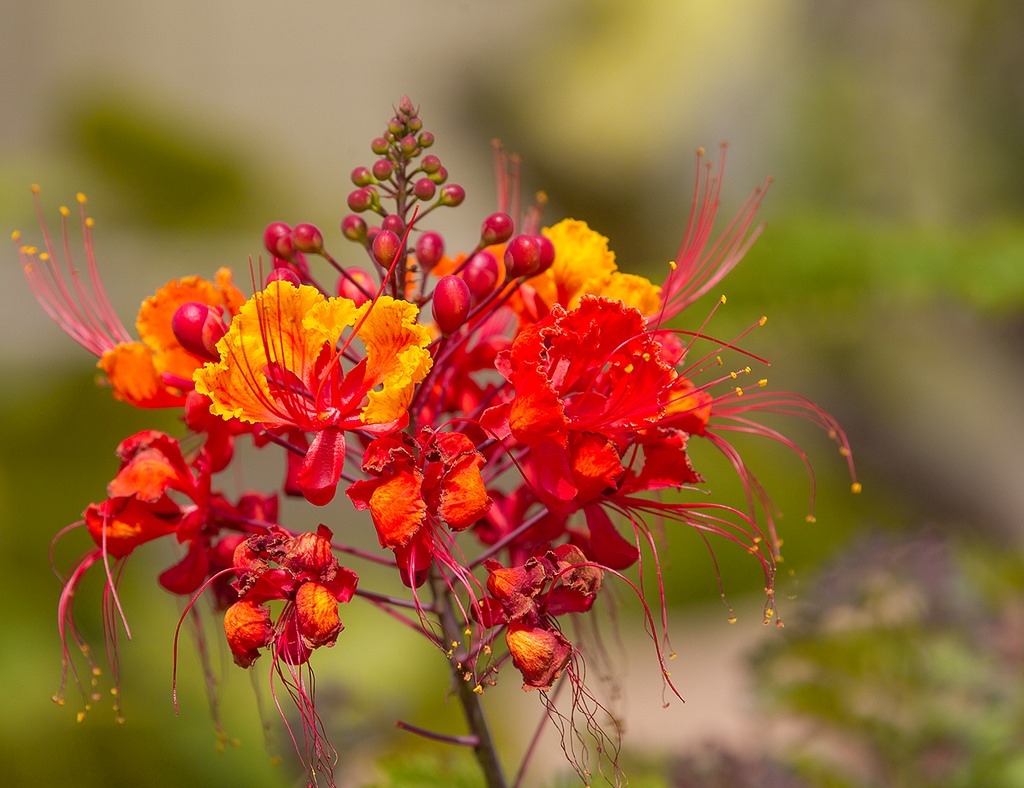
Dottie Holman is a Lake Havasu City Master Gardener Emeritus
Summer is upon us, and with it, one of the amazing plants here in Lake Havasu will be showing its colors. This tropical looking shrub is part of the Pea or Legume Family. It’s one of my favorites and it’s the Red Bird of Paradise (Caesalpinia pulcherrima), Desert Bird of Paradise (Caesalpinia gilliesii) and the Mexican Bird of Paradise (Caesalpinia cacalaco). All three of these shrubs are native to Mexico and the West Indies, and they all love the heat, so they are perfectly suited for our long hot summers and flourish in dry, alkaline soil.
The Bird of Paradise produces large brilliant clusters of yellow, fiery red, and orange flowers that resemble tiny baby orchids up close. Its stems are wispy with feathery fern-like leaves. The structure of the plant allows it to look delicate, yet it will withstand strong winds. This plant is deciduous so it will lose its leaves in the winter time in the colder regions. Here in Havasu the leaves will remain, but they will turn purple. In January, it is recommended that you prune these shrubs back to at least 50%. This will stimulate bushiness and new growth and keep the shrub from getting leggy. The Bird of Paradise is a low water use shrub which translates minimal to no water in the winter and supplemental water during the summer. One drawback of the Bird of Paradise is that the plant produces seed pods that contain poisonous seeds, so make sure certain children and pets do not get a hold of them.
The only difference between the three Bird of Paradises listed above is the flower’s color:
- The Red Bird of Paradise produces brilliant orange-red flower clusters.
- The Desert Bird of Paradise produces yellow flowers clusters with protruding bright red stamens.
- The Mexican Bird of Paradise produces yellow-red flowers clusters.
The Bird of Paradises are easy to grow, the foliage is attractive, the blooms are spectacular, and the flowering periods are long. They blend well with many types of garden settings. They attract hummingbirds and not bees and are low litter. Now that is Paradise!


